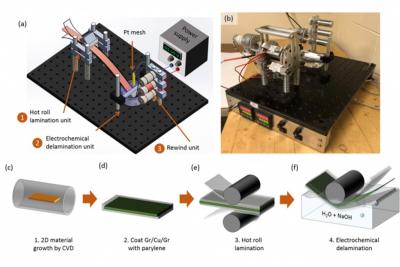Researchers create tunable superconductivity in magic-angle twisted trilayer graphene
When two sheets of graphene are stacked atop each other at just the right angle, the layered structure morphs into an unconventional superconductor, allowing electric currents to pass through without resistance or wasted energy. This magic-angle transformation in bilayer graphene was observed for the first time in 2018 in the group of Pablo Jarillo-Herrero at MIT. Since then, scientists have searched for other materials that can be similarly twisted into superconductivity, but for the most part, no other twisted material has exhibited superconductivity other than the original twisted bilayer graphene.
 Illustrations of A-tw-A stacking (a) and A-tw-B stacking (b). Image from Nature
Illustrations of A-tw-A stacking (a) and A-tw-B stacking (b). Image from Nature
In a recent paper, Jarillo-Herrero and his group reported observing superconductivity in a sandwich of three graphene sheets, the middle layer of which is twisted at a new angle with respect to the outer layers. This new trilayer configuration reportedly exhibits superconductivity that is more robust than its bilayer counterpart.










